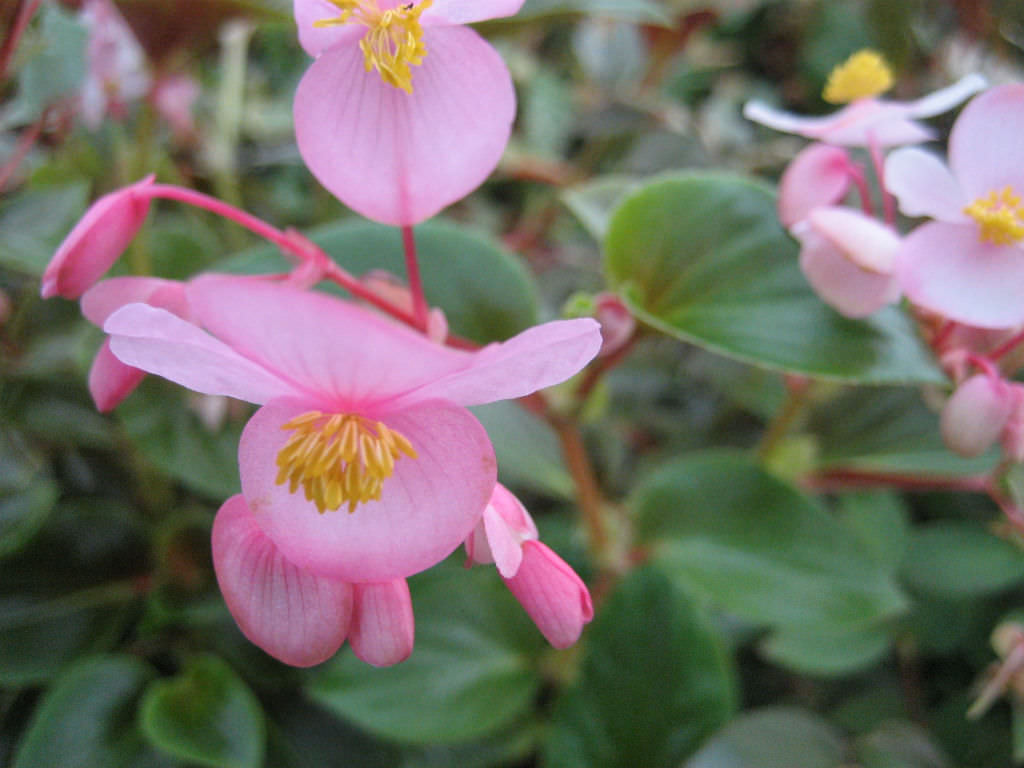
:max_bytes(150000):strip_icc()/KaraRileyWaxBegonias-15-4fe078637cc34878a0b30e31f4b0f313.jpg)
Wax Begonia needs moist but well-drained soil with a soil pH of 5.5–6.5 which makes it slightly acidic. The indoor plants however do not like high humidity as they develop mildew on their leaves. The plant can thrive in humidity when planted outdoors. However, the plant is capable of tolerating high temperatures if it is well protected from the harsh sun rays. The ideal night temperature should be in the mid-60s. The plant grows well at a daily temperature of 75 degrees Fahrenheit. The plant should not sit in water which will cause the root to root. Water the plant thoroughly and leave the pot to drain the excess water completely. When the plant is established then it will need less water and stay between watering for long. If kept indoors, water the plant when you see the soil dried up. It is best to apply a thick mulch layer that retains water between two watering. When planted outdoors, Wax Begonia will need at least 1 inch of water per week. Keep them in the South-facing or East-West position for it to get the optimum amount of sunlight. If you plant the Wax Begonia indoors then give them the maximum possible light. The bronze leaf variety tolerates the harsh sun much better than its green leaf variant.

Wax Begonia prefers bright and filtered sunlight. The Wax Begonia plant should be watered at the base avoiding the leaf spot and reducing the possibility of any fungal disease.
Wax begonia care full#
If the plant gets full sun then this could stress the plant during the summer months making them prone to diseases.

The common symptoms of Wax Begonia poisoning include salivation, vomiting, and kidney failure. These toxins are usually present in the plant roots. Wax Begonia is generally not toxic but these do contain calcium oxalates which can cause mild or severe poisoning in animals.

The plant species are popular with a plethora of varieties available today.Wax Begonia is a valuable plant creating a focal point in the garden with very little maintenance.They have beautiful foliage and flowers which stand as a contrast to other plants in your garden.Here are some benefits of growing Wax Begonia in your garden. You will see the tuber start to sprout in 4 weeks after which it can be removed and placed in an area where it gets bright light.īenefits of Growing Wax Begonia Plant in Your Garden Take care to ensure that the water is not soggy.The tray should be placed in a dark room giving enough water to let the potting mix stay moist. You can place the tubers placing them with their hollow side up at a distance of 1 inch apart in a shallow tray that contains some moist potting mix. There should be enough place to sow the seeds 8 inches apart.The soil should be well-drained and moist.Select a place where your plant will enjoy afternoon shade especially if your area is prone to harsh sunlight.With an ideal temperature and environmental conditions, you can see your Wax Begonia plant start growing in 15 to 20 days. How Long Does Wax Begonia Take to Grow?.It is ideal to transplant your Wax Begonia plant in the flower garden during late spring when there is no danger of frost. Most of the begonia plant varieties are subtropical or tropical plants and grow as perennials. Wax Begonia is easily propagated with seeds and is best planted in the summer or early fall months. Things to Consider about Wax Begonia Plant Growing Conditions for Wax Begonia plant This is a dwarf variety that grows 6 to 8 inches tall. The physical characteristic of the plant is dependent on the breeder but the plants have hybridized to offer various heights and colors. The plant was bred extensively in the past. Non-toxic to human beings but toxic to animalsĪlmost all the Wax Begonia plants that you find today are the hybrid of their ancestor, B. Herbaceous perennial but planted as annual frequently Also referred to as fibrous begonia, the plant is non-invasive with a succulent growth habit that branches from the base and possesses fibrous roots. These however are annuals in many places. Originally from Brazil, Wax Begonia or the Begonia semperflorens are winter hardy that grows in the 10-11 zones.


 0 kommentar(er)
0 kommentar(er)
